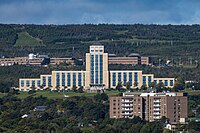
Newfoundland and Labrador is the easternmost province of Canada. Situated in the country's Atlantic region, it is composed of the insular region of Newfoundland and the continental region of Labrador to the northwest, with a combined area of 405,212 square kilometres (156,500 sq mi). In 2018, the province's population was estimated at 525,073. About 92% of the province's population lives on the island of Newfoundland, of whom more than half live on the Avalon Peninsula.

Ferryland is a town in Newfoundland and Labrador on the Avalon Peninsula. According to the 2016 Statistics Canada census, its population is 414.
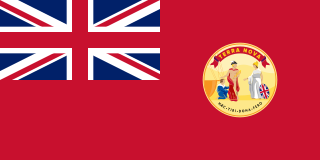
Newfoundland was a British dominion from 1907 to 1934. The dominion, situated in northeastern North America along the Atlantic coast, comprised the island of Newfoundland as well as Labrador on the continental mainland. Before attaining dominion status, Newfoundland was a British colony, self-governing from 1855.

Cape Spear is a headland located on the Avalon Peninsula of Newfoundland near St. John's in the Canadian province of Newfoundland and Labrador. At a longitude of 52°37' W, it is the easternmost point in Canada and North America, excluding Greenland.

The Rooms is a cultural facility in St. John's, Newfoundland and Labrador, Canada. The facility opened in 2005 and houses the Art Gallery of Newfoundland and Labrador, the Provincial Archives of Newfoundland and Labrador and the Provincial Museum of Newfoundland and Labrador.

The Ontario Heritage Act, first enacted on March 5, 1975, allows municipalities and the provincial government to designate individual properties and districts in the Province of Ontario, Canada, as being of cultural heritage value or interest.
The Newfoundland and Labrador Liquor Corporation is a provincial crown corporation of the Canadian province of Newfoundland and Labrador. It is responsible for managing the importation, sale and distribution of beverage alcohol within the province. The name is officially abbreviated NLC, although "Labrador" was added to the official full company name after the abbreviation was established.
This is a list of leaders and office-holders of Canada. See also Canadian incumbents by year.

The Heritage Foundation of Newfoundland and Labrador (HFNL) is a non-profit Crown corporation of the Government of Newfoundland and Labrador established in 1984 by the Historic Resources Act. Its mandate is to stimulate an understanding of, and an appreciation for, the architectural and intangible cultural heritage of Newfoundland and Labrador.

Newfoundland is a large island off the east coast of the North American mainland, and the most populous part of the Canadian province of Newfoundland and Labrador. It has 29 percent of the province's land area. The island is separated from the Labrador Peninsula by the Strait of Belle Isle and from Cape Breton Island by the Cabot Strait. It blocks the mouth of the Saint Lawrence River, creating the Gulf of Saint Lawrence, the world's largest estuary. Newfoundland's nearest neighbour is the French overseas community of Saint-Pierre and Miquelon.

Mistaken Point Ecological Reserve is a wilderness area and a UNESCO World Heritage Site located at the southeastern tip of Newfoundland's Avalon Peninsula in the Canadian province of Newfoundland and Labrador. The reserve is home to the namesake Mistaken Point Formation, which contains one of the most diverse and well-preserved collections of Precambrian fossils in the world. Ediacaran fossils discovered at the site constitute the oldest known remnants of multicellular life on Earth.
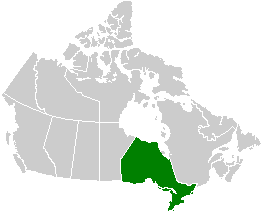
Archaeology and conservation of cultural resources in Ontario fall under the Ministry of Tourism, Culture and Sport. The Province of Ontario has created Acts to insure the protection archaeological and cultural resources. Acts such as the Ontario Heritage Act and Environmental Assessment Act provide the major legal documents that protect heritage and cultural resources. Additionally, Acts such as the Planning Act, the Aggregate Resource Act and the Ontario Cemeteries Act are also implemented when specific triggers occur during archaeological assessments.

Archaeology in Saskatchewan, Canada, is supported by professional and amateur interest, privately funded and not-for-profit organizations, and governmental and citizen co-operation with the primary incentive to encourage archaeological awareness and interest in the heritage that defines the province to this date. The landscape of Saskatchewan hosts substantial prehistoric and historic sites.

Heritage Western Cape (HWC) is a provincial heritage resources authority established by the Minister of Cultural Affairs and Sport of the government of the Western Cape province in South Africa. It is a public entity set up under the terms of the National Heritage Resources Act. It is mandated to care for that part of South Africa's national estate that is of provincial and local significance in the Western Cape. It may delegate responsibility for heritage resources of local significance to competent municipal governments.

The Heritage Property Act )the Act) is a provincial statute which allows for the identification, protection and rehabilitation of cultural heritage properties in the province of Nova Scotia, Canada.
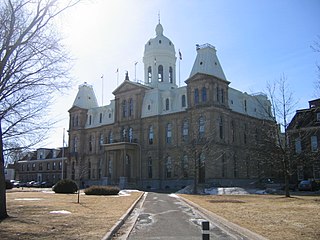
The Heritage Conservation Act is a provincial statute which allows for the preservation of cultural heritage properties and areas in the province of New Brunswick, Canada.

The Heritage Property Act is a provincial statute which allows for the preservation of cultural heritage properties, archaeological sites and palaeontological sites in the province of Saskatchewan, Canada.
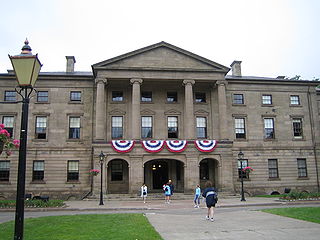
The Heritage Places Protection Act is a provincial statute which allows for the recognition and protection of cultural heritage and natural heritage properties in the province of Prince Edward Island, Canada.
